Matador Network's Blog, page 1148
March 6, 2019
Pet lions mauled Czech man to death
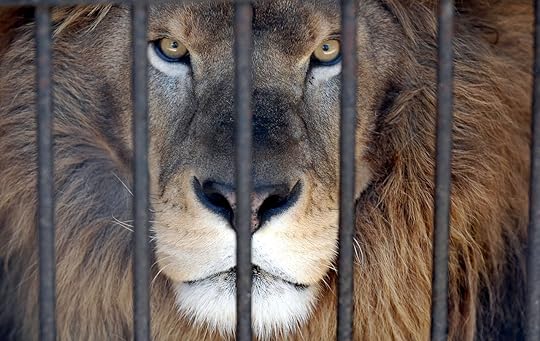
Wild animals don’t make good pets, especially large carnivores like lions. This lion owner in Zdechov, Czech Republic found this out the hard way. Michal Prasek, 34, purchased a lion in 2016 and the lioness last year — for the purpose of breeding — and kept them both in separate homemade cages in his backyard. Yesterday, he was found dead inside the lion’s cage by his father.
His ownership of the lions had reportedly drawn concern from his neighbors, and even sparked tensions with local authorities when he was denied permission to build his cages and fined for illegal breeding. This conflict escalated when he refused to let anyone onto his property. Last summer Prasek even made local headlines when a cyclist collided with the lioness as he was walking her on a leash. However, supposedly lacking any evidence that animal cruelty was taking place, authorities could not remove the lions from his custody.
When Prasek was found dead inside the cage, police responded and shot the big cats dead in order to reach him. According to police, the shootings were “absolutely necessary for them to get to the man,” even if reports all point to the fact that the animals were kept in separate cages.
Not exactly showing his compassionate side, Zdechov mayor Tomas Kocourek said, “Today’s incident will perhaps finally help to resolve this long-term problem.”
According to Newsweek, “Private ownership of big cats is surprisingly common in the Czech Republic, allowing the country to become a hub of illegal wildlife smuggling.”
It’s also worth noting that the cage was locked from the inside, putting another bizarre twist on an already unusual incident. 
H/T: BBC

More like this: The world’s 7 big cats and where to see them in the wild
The post Czech man mauled to death by his pet lion appeared first on Matador Network.

Derry Girls mural in Derry

Derry, Northern Ireland’s second city after Belfast, is getting a serious boost of pride and popularity these days. With the first season of TV series Derry Girls now available on Netflix, and with the second season currently being broadcasted on British Channel 4, the city is getting some serious recognition — as it should.
To celebrate the launch of Derry Girls season two (the first episode went live on March 5 with 1.8 million people tuning in), Channel 4 commissioned a mural representing the cast of the popular show on a huge wall smack dab in the center of Derry. Even the incredibly funny Headmistress Sister Michael is there, looking out of a window.
View this post on InstagramA post shared by Channel 4 (@channel4) on Feb 25, 2019 at 2:15am PST
The city has a strong tradition of political murals (the most well-known of which is probably the black-and-white “You are now entering Free Derry”), and many of them are featured in the series. According to Channel 4, the mural “took the artists five days to complete and received an overwhelmingly positive reception from the Derry community and the cast.”
Derry Girls is the story of five teenagers, Erin, Clare, Michelle, Orla, and James coming of age in Derry in 1992, in the midst of civil unrest and partisan violence. The series is probably the funniest thing coming out of Ulster and a very authentic portrayal of teenagehood and life during the Troubles; the creator Lisa McGee was born and raised in Derry.

Photo: LMK Photography/Visit Derry/Facebook
If you’re a sucker for thick Northern Irish accents, ‘90s nostalgia, and want to laugh out loud for about 23 minutes per episode, you should definitely add it to your Netflix list. Once you’re hooked, take your love of the series to the next level by checking out where it was filmed and snapping a selfie with the girls and the “wee English fella.” Visit Derry has even curated itineraries for fans of the show according to the character they identify the most with, so you’re all set for a trip to Free Derry. 

More like this: Why you shouldn’t leave Belfast without taking a Black Taxi tour
The post Hilarious ‘Derry Girls’ now have their own Derry mural appeared first on Matador Network.

Tel Aviv’s best art museums
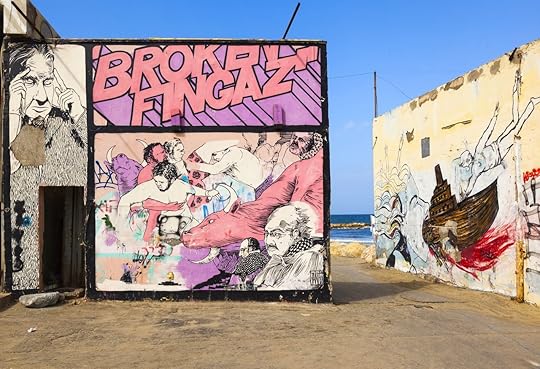
Israel is constantly in the headlines, and it’s rarely for the art scene. Tel Aviv, however, can at times feel a world apart. The nearly 430,000-person city is more secular than other parts of the country, and is known for its restaurants, bars, street art, and many galleries. It has a little bit of everything for creatives, regardless of how people want to express themselves.
No one knows this better than the artists currently living in Tel Aviv. Ariela Wertheimer is an artist who was born, raised, and artistically trained in Israel. Like many artists in the city, she uses Tel Aviv as both inspiration and a platform for her paintings, drawings, and photography.
“All my life I lived ‘outside the big city,’ and when I got to Tel Aviv I was dazzled by the beauty and power of street art,” Wertheimer said. Everything about it was inspiring to her, all the “colors, people, and talent.”
No trip to Tel Aviv is complete without a thorough exploration of its art. Wertheimer is currently showing a collection called The Odyssey in Jaffa inspired by the colors, light, and sea. We caught up with Wertheimer to learn more about what makes Tel Aviv such an exciting place for people who make — and love — art.
What makes Tel Aviv’s art scene distinct
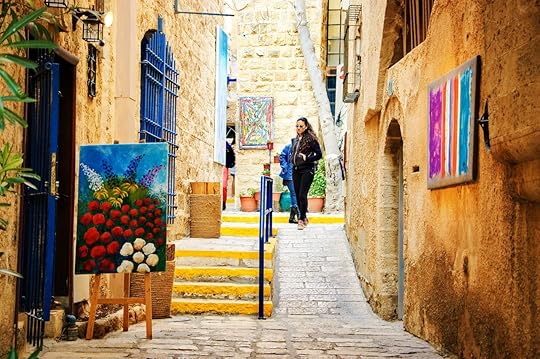
Photo: Elena Dijour/Shutterstock
“What sets Tel Aviv apart from other major art centers in the world is that our art is very accessible and informal,” Wertheimer said. “You encounter art 24/7 in the city. For example, Nahalat Binyamin Street in Tel Aviv has art everywhere you look, from the entrances to bars, inside buildings, on building walls, roofs and even on the pavement itself.”
Tel Aviv is smaller than the best street art cities in the world, and much smaller than the major art hubs that everyone knows. Yet it holds its own thanks to the mix of influences and the strong art community.
“I want to believe that Tel Aviv can join the list of respectable cities that includes New York, London, Paris, Berlin, and more,” Wertheimer said. “To my delight, Tel Aviv’s coastal strip attracts many tourists from all over the world. In Israel, you can hear a lot of languages, discover different cultures, and artists in Tel Aviv are always looking ahead to their next inspiration.”
Go to Tel Aviv for the art museums and galleries.
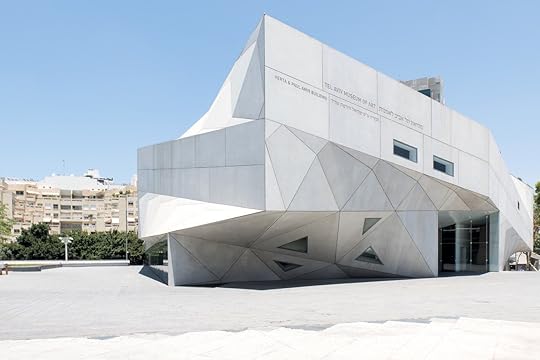
Photo: Mario Troiani/Shutterstock
Tel Aviv’s established artists have a home in the many museums. Some are large and some are small galleries, but all offer a professional space for artists to exhibit their work. This is just a short list of museums to get you started.
Tel Aviv Museum of Art: A modern art museum that rivals those in the world’s top metropolises. It opened in 1932 — more than 15 years before Israel was established. Here, you’ll find exhibits from both Israeli and international artists in permanent and rotating galleries. There’s work from the masters like Picasso and Dali as well as contemporary pieces. The building itself is striking, from its five floors to its oblong shape and concrete facade to the atrium that sheds light on the art inside. Make sure to set aside plenty of time for your visit.
Eretz Israel Museum: Spread around an archaeological site, the Eretz Israel Museum has exhibits featuring history and ethnography along with art and culture. This is where to go when you’re looking for a sense of Israel’s past art and humanities.
Beit Hatfutsot: The full name is Beit Hatfutsot: Museum of the Jewish People, which gives you a good understanding of the type of scope this museum covers. Exhibits here look at Jewish history and art in the Jewish diaspora, not just in Tel Aviv. The museum is family friendly with plenty of sections designed just for kids.
If you’re looking for something a little different than a museum but with the same respect to presentation, check out some of the many galleries in Tel Aviv. At the top of your list should be the Sommer Gallery, the Center for Contemporary Art, and the Inga Gallery of Contemporary Art.
But stay for the Tel Aviv for the street art.

Photo: Protasov AN/Shutterstock
With Tel Aviv’s reputation as the center of modern art culture in Israel, there’s no shortage of traditional museums. It takes a lot more than museums to make a city an art destination, however, and Tel Aviv’s art scene starts on the street. Wertheimer suggests starting with a tour. Going it alone (especially for people who don’t speak or read Hebrew) can be a bit overwhelming. Thankfully, there are many tours to choose from.
Grafitiyul: The name of this company is a mashup of “graffiti” and “tiyul,” which means “trip” in Hebrew. The various tours run by the group send people through streets and walls filled with graffiti. There are both day and night tours, as well as tours led by local graffiti artists where you get to try your hand at spray painting your own tags.
Artspace Tel Aviv: In the southern part of Tel Aviv you’ll find the area of Kiryat Hamelacha. It’s loaded to the brim with street art and galleries featuring artists from all walks of life. Artspace works with around 300 artists to showcase established and rising talent.
Alternative Tel Aviv: As mentioned before, one of the main things that will be competing to drag your attention away from the art in Tel Aviv is the constant food. Choose both instead. Alternative Tel Aviv has both sole graffiti tours and a combined graffiti and food tour of the south part of the city.
It’s not just the art, it’s the architecture, too.

Photo: ChameleonsEye/Shutterstock
The foundation for Tel Aviv started in 1909 just north of Jaffa, a port city. The British ruled the region as Palestine from 1917 to 1948, and during that time, the White City of Tel Aviv was constructed by European-trained architects. Today, the area has one of the highest concentrations of Bauhaus architecture and is recognized as a UNESCO World Heritage site.
If you couldn’t tell from the name, most of the buildings in the White City are white. Take a walk down Rothschild Boulevard to get a taste of what makes the White City one of the trendier spots to gather as well as to see what people mean when they say buildings can be art unto themselves. 

More like this: 10+ must see spots in Tel Aviv
The post Why Tel Aviv needs to be on every artist’s radar appeared first on Matador Network.

Where to celebrate Holi
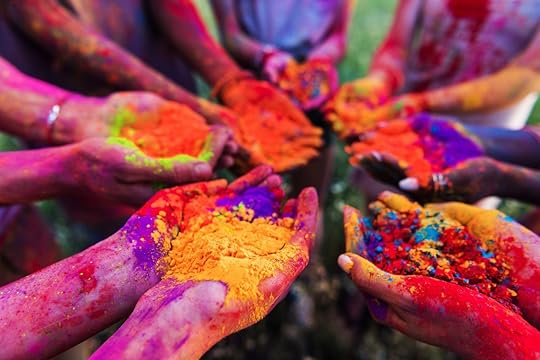
Many of us know the Holi festival as that event where you gather in huge crowds to throw powdered dye at each other, but it’s much more than that. Holi or Spring Festival is an important Hindu festival that marks the arrival of spring, and is celebrated all over the world. The festival’s roots lie in one Hindu legend that features the demon king Hiranyakashyap, who believed he was superior to all the gods. His son, Prahlad, rebelled and worshiped the god Vishnu, so Hiranyakashyap conspired to burn his son alive with the help of his sister Holika, supposedly immune to the flames. Prahlad was saved by Vishnu, while Holika burned to death. Holi, whose name comes from Holika, commemorates this legend by celebrating the triumph of good over evil. Although Holi originated in India, the festival has exploded in popularity and spread throughout the world. If you can’t make it to India for this colorful festival on March 20 and 21, here are some of the best places to celebrate Holi in 2019.
1. Spanish Fork, Utah
View this post on Instagram
A post shared by Festival of Colors USA (@festivalofcolorsusa) on May 5, 2018 at 9:09pm PDT
The world’s biggest Holi celebration isn’t even in India. Just outside the city of Spanish Fork, Utah, around 70,000 people regularly attend the “Festival of Colors,” which began back in 1989. The event was started by the local Hare Krishna temple and is still run by it today. The official website promises two days of lively, color-filled activities, including interactive dance, bands, DJs, yoga classes, vegan and vegetarian food, and good cheer. Live performances range from hip hop and soul to traditional Bhakti fusion dance and BollyPop. Environmentally friendly colors will be available for $3 per bag, and dust masks and bandanas will also be sold. The event takes place at the Sri Sri Radha Krishna Temple on Saturday March 30 from 10:00 AM to 5:00 PM, and the Sunday after from 11:00 AM to 4:00 PM. A multi-entry wristband costs $6.50, but there are various registration options available on the event’s website.
2. Mauritius
Mauritius is a small island nation east of Madagascar in the Indian Ocean, and it is home to a large Hindu presence. Most of the population of Mauritius, of which two-thirds are of Indian ancestry, considers itself Hindu — so Holi is widely celebrated on the island. In commemoration of Prahlad’s triumph over Hiranyakashyap and Holika, people build beach bonfires to kick off the celebration that includes folk singing and dancing. The next day, massive crowds descend upon the streets to throw handfuls of colored powder and water on each other. Beyond paint-slinging, participants exchange gifts with their loved ones and give gifts of sweets. This year, Mauritius is celebrating Holi from March 20 to 21.
3. Guyana
View this post on Instagram
March 5, 2019
Best mountain biking in Queenstown

The gondola in Queenstown, New Zealand, is well-known as a must-do when visiting the South Island. Yet the vast majority of the cable car’s 3.6 million annual visitors are focused on taking the perfect photo of the Remarkables mountain range. Not many thrill seekers have planned a trip up the gondola as part of their adventure holiday. Yet amongst the pine trees of Ben Lomond Reserve is arguably New Zealand’s best downhill mountain biking park — with 20 miles of trails for every type of rider.
You’ll get unbelievable views.
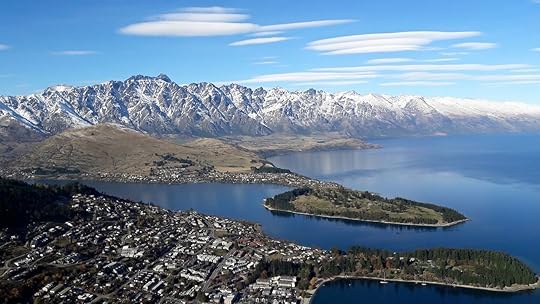
Photo: Skyline Queenstown/Facebook
The Skyline Gondola attracts millions of annual visitors because the views from the top are simply jaw-dropping. Ride it and you’ll agree. The view of Lake Wakatipu, New Zealand’s third largest lake, is awe-inspiring. Because of the lake’s unusual shape, Lake Wakatipu has rising water levels: every 25 minutes, the water rises and falls around 10 centimeters. Maori legend suggests that there’s a monster lying at the bottom of the lake, known as Matau, and with each rise of the lake, his heart beats.
Beyond the lake, located on the southeastern shore, is the stunning mountain range that’s popular in the ski season: the Remarkables. Many reasons are given for the range’s name, the most convincing of which is that early settlers were simply stunned by the incredible view, hence the term “remarkables.”
Many tourists ride the gondola to get the panoramic view of the ranges from the top. What they miss out on, though, are the different perspectives gained from cycling the downhill tracks. From the top, the downhill ride offers plenty of places to just stop and take it all in.
The gondola ride is an adventure of its own.
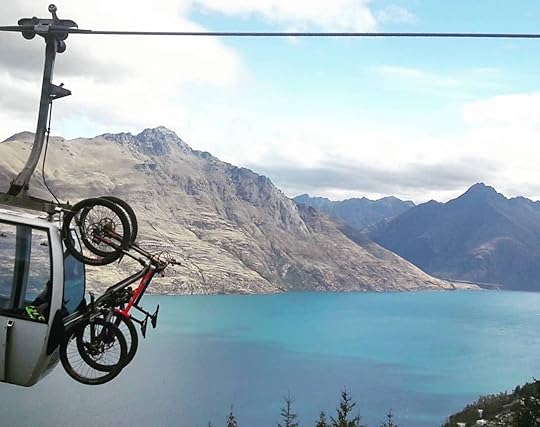
Photo: Skyline Queenstown/Facebook
When you enter the base of the gondola, the crew attaches your mountain bike to the cabin. As soon as your bike is unclipped at the top, you’ll have access to over 30 world-class trails — or 20 miles of adrenaline-inducing trail options, ranging in difficulty from beginner green to double black.
The six-minute gondola ride is an adventure in itself, with a vertical rise of nearly 1,500 feet at a 37-degree incline. The gondola has been around for nearly 50 years, allowing both locals and tourists alike to skip the hike and take the fast lane up Bob’s Peak. The first gondola traveled up to the peak in 1967. Since then, the gondola has one tourist accolade after another, including New Zealand Tourism’s “Best Visitor Attraction” and “Best Adventure Tourism” product.
The four-month trial season for New Zealand’s first gondola-assisted bike lift began in January 2011. By September, the bike park and gondola lift reopened for an eight-month season with similar success. The park now opens every year in the warmer seasons from September to May.
You can choose from over 30 world-class trails.
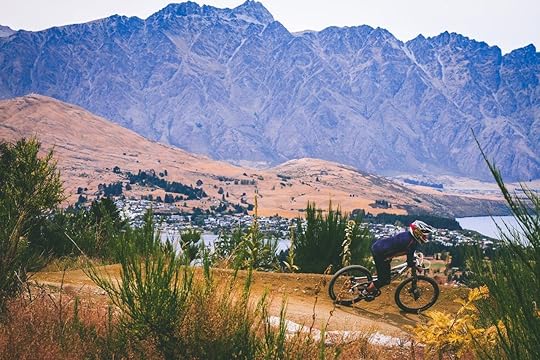
Photo: Skyline Queenstown/Facebook
The Queenstown Bike Park prides itself on its world-class trails and the expert riders that flock to New Zealand to ride downhill each year. Some professionals make Queenstown their homebase during the mountain biking season, as the Skyline is perfect for both freeriding and race training.
Each track has a themed name, and funny and peculiar tracks continue to pop up each year, such as the Single Track Sandwich, the Slippery Ninja, and most recently, “Huck Yeah!” One of the tougher trails is the “Hobbit,” named after the beech forest scenery seen in the Tolkien movie adaptation.
For some of the best views of Lake Wakatipu and the Remarkables, try the Thunder Goat — which starts midway down the mountain and has some of the best views on the mountain. There are also tracks designed for beginners and kids, and the four-mile Hammy’s Track is perfect for entry-level riders.
There are plenty of options for your adrenaline needs.

Photo: Alex Cimbal/Shutterstock
Once your legs and forearms are shot after all of that mountain biking, try the descending on the crazy luge carts. New Zealand’s version of the Mario Kart race track is near the entrance to the downhill mountain biking. Leave your bike on a secured rack overlooking the Lake and take the recently-refurbished chairlift up to the luge start line. Opened in 1997, the Queenstown luge, owned by Skyline Enterprise, has since been replicated in Singapore, Canada, and South Korea.
Other springtime activities for the outdoorsy types include a round of golf at Millbrook Resort or The Hills, a day hike on the Routeburn Track, or the usual adrenaline-filled attractions in the area such as skydiving, bungy jumping, jet boating, white water rafting, paragliding, and swinging on the Nevis Swing across a gaping canyon.
Apres drinks are minutes away.
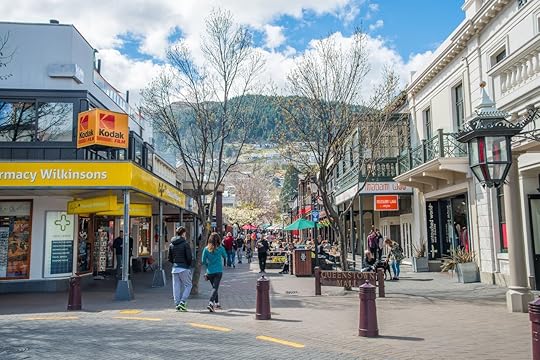
Photo: Boyloso/Shutterstock
Most of the time, mountain biking involves going pretty far out of town. At the Skyline Bike Park, you’re practically in the center of Queenstown. If you need to head back to your hotel at any point, you’re only a five-minute ride away.
Before you even reach the gondola, you’ll need a mountain bike. Many of the stores in town can hook you up with both a bike and a lift pass, or a guided tour if you’re feeling lost about your experience level or which tracks to take.
For the apres activities after a half or full day on the tracks, the friendly staff at Atlas Craft Beer Cafe will take care of you. Located on the Steamer Wharf, Atlas has 22 craft beers on tap and regularly supports the local Queenstown Mountain Bike Club through fundraising events. 

More like this: Magic Spot: Queenstown's super-fun Skyline Luge Racetrack
The post Mountain biking off the Skyline Gondola in New Zealand should be on your bucket list appeared first on Matador Network.

Best pancake recipes around world

Debates rage in the US over the superiority of waffles versus pancakes. Poll the global community, though, and the answer becomes obvious: pancakes. While several countries have their own takes on waffles, traditional pancake recipes span the continents, incorporate more creative flavors, fall on both sides of the sweet-savory divide, and come in all different shapes and sizes, proving just how seriously the world takes this delicious staple. Take note IHOP: Each of these 13 delicious international dishes is more than worthy of a slot on your full-stack menu.
1. Crepes and galettes — France
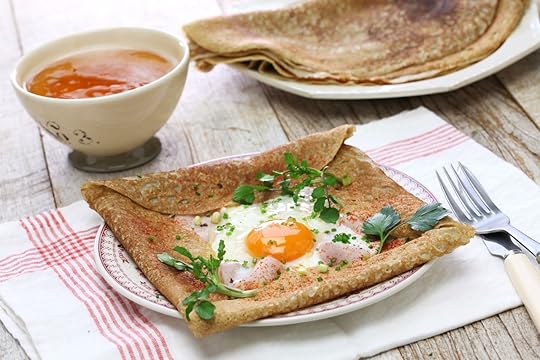
Photo: bonchan/Shutterstock
There isn’t much we can tell you about crepes that you don’t already know, but we’ll never tire of praising these paper-thin French pancakes that can brighten up breakfast or snack time as easily as they round out dinner and dessert. Classic combos include powdered sugar and lemon, banana and nutella, and jam but there’s no limit to what can be — and many a Breton crepe-maker has — stuffed inside a crepe. Galettes are crepes’ savory sisters. Made with buckwheat flour, galettes are often topped with eggs, ham, sausage, cheese, and made for a delicious and filling meal. Both crepes and galettes are traditionally accompanied by Breton cider in small bowls called bôlées.
2. Pannekoek — South Africa
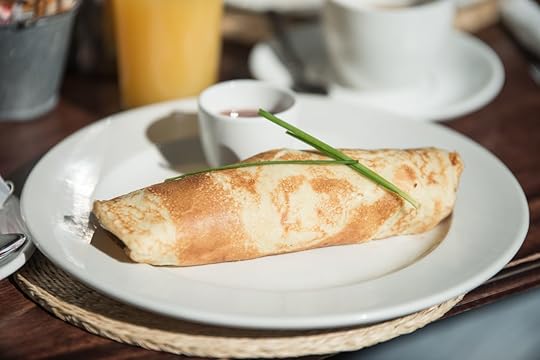
Photo: Forefront Images/Shutterstock
Thicker than a crepe but thinner than an American pancake, this Dutch treat turned South African staple is just the right amount of filling. Pannekoek can be rolled up with sweet or savory fillings or eaten plain with a sprinkle of cinnamon-sugar mix. They’re best eaten hot out of the pan, particularly as a rainy day treat according to some. A theory we’ll happily test.
3. Blini — Russia
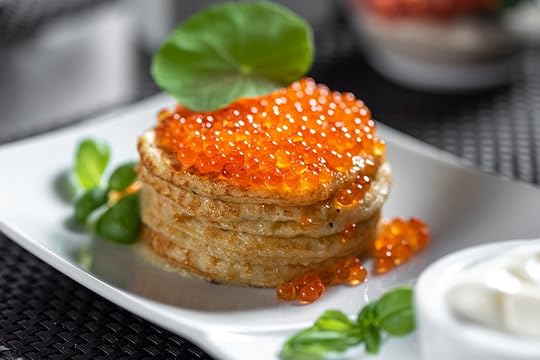
Photo: Vjacheslav Shishlov/Shutterstock
Blinis are what happens when you treat a buckwheat pancake like a cracker, and we have Russia to thank for the welcome indulgence that is a creme fraiche and caviar or smoked salmon-topped blini. Treacly toppings like honey or jam are equally tasty when you have a sweet tooth. A relative of blinis, blintzes are another take on pancakes we owe to Russia, best enjoyed with cheese, berries, or both.
4. Fluffy pancakes — Japan

Photo: Brent Hofacker/Shutterstock
Japanese pancakes are no joke. They’re insanely fluffy, extremely delicious diet-destroyers that make a full stack of buttermilk pancakes look like a kiddie meal. The texture has an airy, spongy, souffle-like quality that also helps with their impressive height. Some add Japanese mayo to achieve extra fluff while others consider this blasphemy. The only real sin here would be not tasting these Japanese showstoppers yourself the next chance you get.
5. Mexican hotcakes
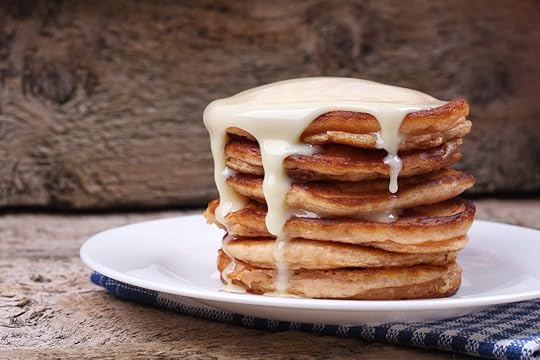
Photo: Cozy Home/Shutterstock
The biggest differences between Mexican hotcakes and American pancakes are the use of cornmeal and addition of cinnamon south of the border. That, and the toppings. While maple syrup is king in the US, condensed milk is a more common slathering agent in Mexico. Otherwise, the two look largely the same and are every bit as hunger-inducing as the other.
6. Msemmen — Morocco
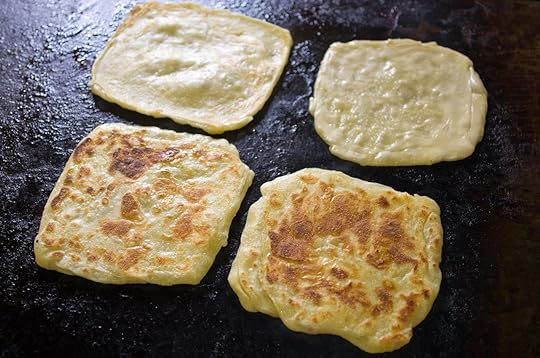
Photo: CCat82/Shutterstock
Somewhere between a crepe and a flatbread, this Maghrebi delicacy is a go-to breakfast in Morocco and North Africa in general. Msemmen has a squarish shape rather than the traditional circular one. Once cooked, msemmen is nice and chewy and particularly satisfying when paired with a mug of mint tea.
7. Bánh xèo — Vietnam
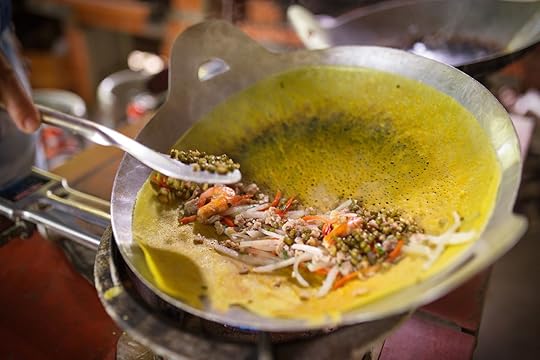
Photo: /Shutterstock
You won’t see this savory, sizzling pancake on many breakfast menus, but it’s a solid lunch option in Vietnam and Cambodia for both vegetarians and meat eaters. The rice-flour pancake is spiced with turmeric; stuffed with bean sprouts, greens, and optional proteins like pork and shrimp; and then garnished with herbs. The name bánh xèo roughly translates to “sizzling pancake” for the sound the batter makes when it hits the pan.
8. Chorreadas — Costa Rica
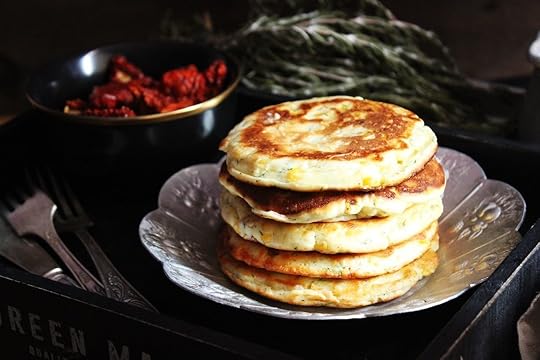
Photo: Elena Lapshina/Shutterstock
Costa Rica’s corn pancakes can just as easily be served at lunch and dinner as well as breakfast. It’s a choose-your-own-adventure dish of sweet or savory that’s made with a base of fresh ground corn rather than flour. For the sweet version, add sugar to the fresh corn and milk mix. For savory, go with garlic, onion, and sour cream.
9. Dosa — South India
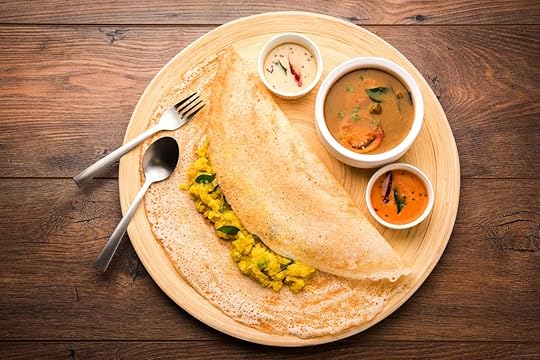
Photo: StockImageFactory.com/Shutterstock
This looks like your everyday crepe, but there’s one key difference: Dosas use a batter that’s fermented overnight, which gives them fluffier texture and slightly sour flavor. The batter is made with rice, black gram, and fenugreek seeds. When cooked, the batter is spread in a circle around the pan just like what you see people doing with crepes. The thin pancake tastes great wrapped around pretty much any cheese, meat, or spiced filling such as a lentil dal.
10. Crespelle — Italy
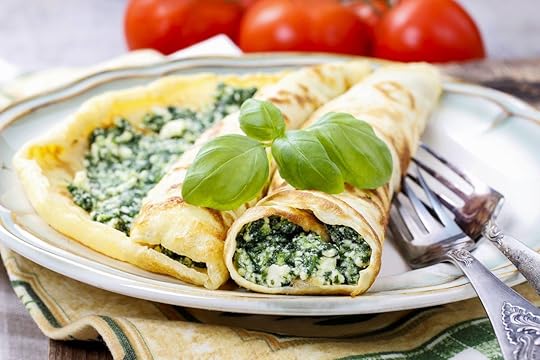
Photo: Agnes Kantaruk/Shutterstock
The Italian version of crepes are almost always savory, unlike their French counterparts. They’re primarily served in Tuscany, where they sometimes are colloquially known as pezzole delle nonna, or “grandma’s handkerchiefs.” Crespelles are made with wheat flour or chestnut flour, eggs, and milk, and are cooked thin. When done, they’re often rolled and filled with ricotta cheese, lemon, parmesan, and other spices, and can sometimes be served in brodo, (broth).
11. Serabi — Indonesia
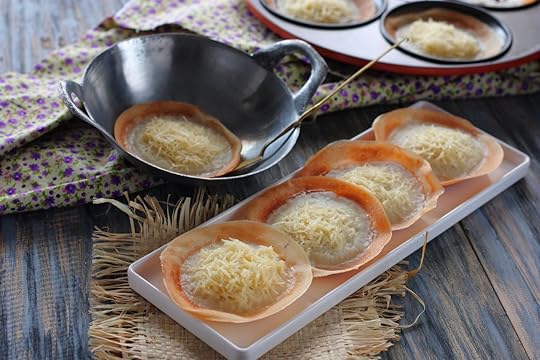
Photo: Riana Ambarsari/Shutterstock
Served as a street food snack more often than breakfast, serabi is an eggless pancake made with rice flour and coconut. Vendors cook them in little molds for a consistent size, kind of like a dollar pancake, and only one side touches the pan. Serabi can be filled with savory ingredients, but it’s typically served with a sweet coconut milk and sugar syrup, and, like the best Southeast Asian desserts, is occasionally green from pandan.
12. Crempogs — Wales
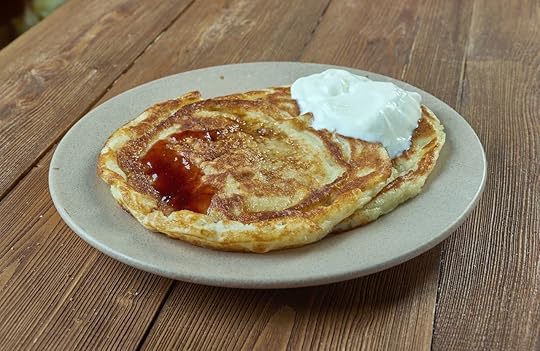
Photo: Fanfo/Shutterstock
In Wales, you can’t have Shrove Tuesday (also known as Pancake Day) without crempogs. They’re similar to the pancakes you find in the US, and are made with flour, buttermilk, yeast (baking soda for faster crempogs), vinegar, egg, and butter. And while they’re inextricably linked to pre-Lent foods, there’s never a bad time for a crempog.
13. Roti jala — Malaysia

Photo: Dolly MJ/Shutterstock
Roti jala translates to “net bread,” and its appearance is all you need to understand why. The small, rolled crepe is home food that’s typically served midday with tea or alongside meat curries. It’s made with flour, turmeric, egg, and coconut milk. The key is getting the texture and shape just right. To do so, the batter is poured from a squeeze bottle to make lacy layers, which is left on the oiled pan just enough to cook through, but not so long that it gets crispy. 

More like this: The 7 most interesting things people put on toast around the world
The post 13 delicious ways people make pancakes around the world appeared first on Matador Network.

Paris immersive Van Gogh exhibition

If you find traditional museums boring and have a hard time focusing on two dimensional paintings, you’re in for a treat. This new Van Gogh experience in Paris lets you experience the famed artist like never before — through an immersive light and sound show featuring some of his most well-known paintings.
The Vincent van Gogh, la nuit étoilée exhibition, which runs until December 31, 2019 at l’Atelier des Lumières, will dazzle visitors with some of Van Gogh’s most famous paintings projected onto massive walls; there are 2,000 moving pictures in total accompanied by a beautiful playlist.
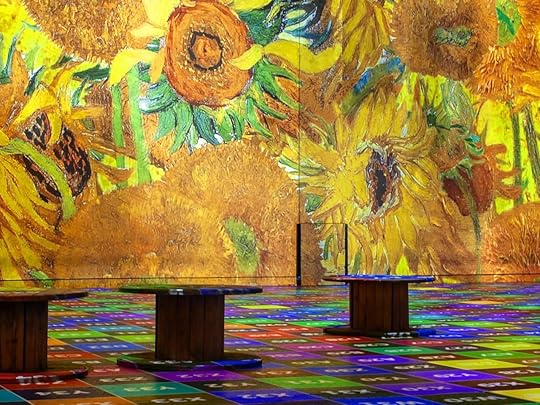
Photo: Culturespaces/Atelier des Lumières/Facebook
The goal of the exhibition is to allow visitors to explore Van Gogh’s evolution as an artist, from works like Starry Night (1889), The Sunflowers (1888), Potato Eaters (1885), and The Bedroom (1889). The exhibit seeks to highlight the artist’s powerful and expressive brushstrokes, projected all over the huge space, and give visitors a guided immersive tour through the various stages of Van Gogh’s art.

Photo: Culturespaces/ E. Spiller
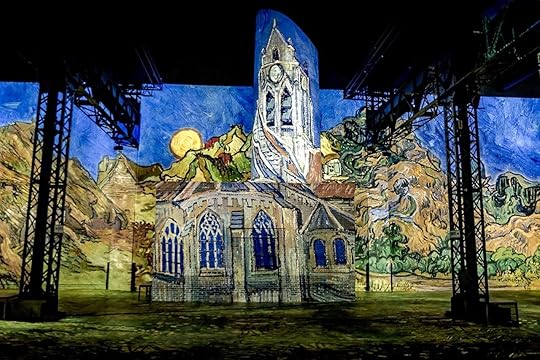
Photo: Culturespaces/ E. Spiller

Photo: Culturespaces/S. Lloyd
The exhibition costs $14.50 per adult, and is open Monday to Thursday from 10:00 AM to 6:00 PM. You can book your ticket on the official website. 
H/T: The Guardian

More like this: The 7 most incredible museums to visit in 2019
The post Immerse yourself in Van Gogh’s Starry Night at this Paris exhibit appeared first on Matador Network.

How to meet people and make friends

Moving to a new city can be daunting. Getting used to unfamiliar sights, smells, landmarks, traffic patterns, and even local customs, can really push you outside of your comfort zone. To get back in the game, and start making a life for yourself in a new place, you need friends. Sometimes easier said than done, meeting new people can be a lot of fun, and finding companionship can introduce you to the things that make your new city great. If you’re feeling a little lonely, here’s how to make friends when you move to a new city.
1. Find a Meetup.
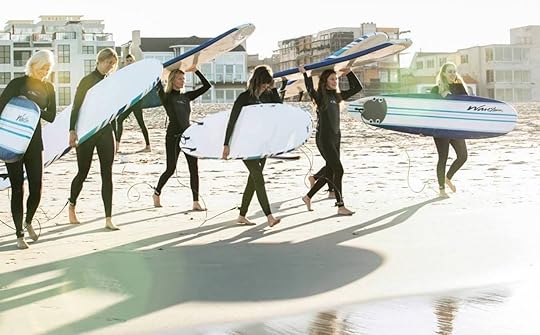
Photo: Meetup/Facebook
With over 225,000 Meetup groups in 180 countries, there’s a Meetup group for just about every interest. If you already like doing something, like group road biking, surfing, or knitting, a Meetup group is a great way to find a new flock. Another option is to try something new and see who you might meet along the way. Meetup groups can keep your social life very busy and intellectually stimulating, not to mention help you find your place in your new place.
2. Swipe right.
One of the easiest ways to make connections is to put the word out on social networks to see if any of your friends know, and can introduce you to, someone in your new city. If you come up empty, apps such as Bumble BFF and Friender allow you to build a profile based around your interests, which matches you to people looking for new friends that share those interests. There may be other folks new to town, and exploring with someone who’s also testing the ropes for the first time can be a great way to get to know your new city and make a new friend.
3. Join a volunteer organization.
There’s hardly a better way to meet people with interests aligned with yours than by volunteering. Once you identify an issue you would like to help with — homelessness, animals, the environment — there are myriad ways to get involved, and most involve other people. Whether it’s sitting around a table stuffing envelopes and chatting, doing park or trail clean up, or walking shelter dogs, you’re guaranteed to meet like-minded folks, all while doing something good for your new community.
4. Go to the dog park.

Photo: Helen Sushitskaya/Shutterstock
Assuming you like animals, as many people do, a trip to the dog park can be a great way to meet people — even if you don’t have a dog. Greeting an animal before its person takes a little bit of the pressure off of just walking up to people with a cold open. Plus, pets are good for your health so, even if you aren’t successful making friends right away, at least you might come away from the experience with lower blood pressure and reduced levels of stress.
5. Take a class.
Whether at the gym or at a local learning center or college, taking a class isn’t just personal improvement, it can be a great way to meet people. Hands-on classes like dance or cooking guarantee you’ll meet some new folks; even specific job training can lead to networking opportunities. If you are an expert at something other people might be interested in, maybe consider teaching a class through one of these outlets.
6. Attend a community event.
From marches and rallies to auctions and fundraisers, community events bring together large groups of people who believe in a common cause. Because most such events are “feel-good” things, it’s a lot easier to introduce yourself and strike up multiple conversations when you’re doing something you love — and so is everyone else.
7. Shop local.

Photo: Monkey Business Images/Shutterstock
Good food, art, and music are some of the things that attract people to community and farmers markets. They’re also things that bring people together. Chatting with a band after a set, asking an artist about their work, or getting advice from a farmer about how to prepare local foods that may be new to you, are great ways to make friends. Put your email on these folks’ mailing lists and, pretty soon, you’ll find yourself invited to all kinds of get-togethers. New friends won’t be far behind.
8. Just say “hi.”
Many times, our lives are so frantic we barely have time to notice who lives right next door. Being the new person on the block is a great excuse to knock on the doors of a few neighbors, introduce yourself, and maybe discover some kindred spirits. If you live in an apartment or condo building with a common area, throw yourself a housewarming happy hour party. A couple of posters and a few bottles of wine are an easy investment in your new community. If nothing else, you might meet someone who can check on your fish when you’re out and about exploring your new city. 

More like this: The 7 chillest countries where getting a visa is ridiculously easy
The post How to make friends when you move to a new city appeared first on Matador Network.

Tequileria at Disney World

There’s always a line at the Mexico Pavilion at Disney World’s Epcot in Florida. No one should be surprised about a line at Disney World, but the folks in this line aren’t waiting to meet Mickey Mouse or see a live rendition of Beauty and the Beast. They’re waiting to enter a tequileria.
Since 2009, La Cava del Tequila has brought life to the Mexico Pavilion. It serves an average of 1,000 people a day with nine tables, two high-tops, and a walk-up bar. The handcrafted margaritas and vast amount of agave spirits have earned the bar international acclaim and gratitude from a thirsty Disney audience.
The cellar is well stocked to meet the growing demand of agave spirits, with a diverse offering of more than 130 tequilas, 40 mezcals (including many of the most sustainable mezcals), and even a couple of sotols, raicillas, and a bacanora. “Our main interest has been to show and inform guests about the culture and history behind tequila production,” said beverage director Javier Villegas. “We want them to appreciate the value and uniqueness of this spirit.”

Photo: Disney World Epcot
When you approach La Cava, you wouldn’t necessarily expect to be walking into a kingdom of agave spirits. Finding a bar at this caliber anywhere in Disney is a little surprising. You enter the Mexico Pavilion through a massive Aztec-inspired pyramid that brings you to a new world styled like a Mexican village. It’s nighttime all the time in the courtyard, with vendors selling food and authentic Mexican sweets from carts. To the right is La Cava (and its occasional lines), which feels as far away from the three singing ducks from The Three Caballeros ride as Disney World does from Mexico City.
Inside, there’s one long room with booth seating on one side and the bar on the other. A detailed mural of the tequila process from harvest to production covers the outer wall above the booths. Spirits are illuminated by a backlight and serve as a lure in the otherwise dim interior.
La Cava forgoes cheap, mass-market tequilas. You won’t find bottles made with less than 100-percent agave or ones that are loaded with added sugar. Instead, the bar instead focuses on the finer side. The most expensive tequila at the bar is Jose Cuervo 250 Anniversary, which sells for $250 per serving. These high-end agave spirits help convey La Cava’s modus operandi.
“I think the biggest difference with our menu,” Villegas said, “is that we only carry 100-percent agave tequilas and we do not have many of the most common brands, or if we have them, we don’t push them. We focus more on smaller and even boutique brands that we try to help get into the market. We are constantly looking for brands that use a more traditional, artisanal, or handcrafted production process, instead of highly industrialized ones.”
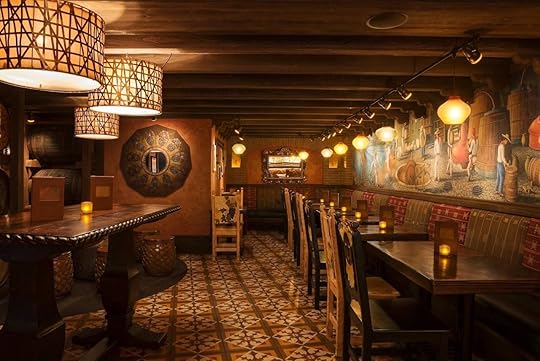
Photo: La Cava Del Tequila/Facebook
To be labeled tequila, it must be made from at least 51 percent blue agave and produced in one of five states included in Mexico’s tequila denomination of origin. While cheaper neutral liquor can fill out the rest of the 49 percent in a bottle of tequila, the best tequilas use only agave spirit and are often more expensive. Interest for these premium tequilas is rapidly growing in the US, as shown by the super and high-end premium tequila markets, which grew 706 percent and 292 percent since 2002, according to the Distilled Spirits Council.
La Cava’s dedication to these better bottles is what makes it the best in Florida. Tequila here is meant to be sipped and savored, not chugged, and La Cava serves the spirit the traditional way with a side of sangrita. Tequila ambassadors from the town of Tequila are on site to assist with training and maintain standards, and the staff is certified by the CRT (Tequila Regulatory Council). “There are very few bars in the US that have this certification,” Villegas said.

Photo: La Cava Del Tequila/Facebook
While some common brands are available, Villegas recommends “guests try something else since they can find [those brands] anywhere else.” His top picks for must-try tequilas include Casa Dragones, Ambhar, El Velo, Casa Noble, and Avion. For mezcal, he suggests Ilegal, Gracias a Dios, and Montelobos. He lists these “because of the quality of their product, their vision, and their conscientious way of working with their community and the environment.”
The popular draw for those passing by are the margaritas, which are available at the walk-through bar. There’s both the traditional drink and twists on the classic cocktail created by resident mixologist Gustavo Ortega-Oyarzun. Variations include passionfruit, caramelized pineapple, and mango, and the rim is lined with options like Tajín chili powder and hibiscus salt. According to Villegas, the avocado margarita is a fan favorite.
For food, the options include chips and salsa, guacamole, and queso. Like any good tequileria, La Cava wants the focus to be on the spirits and drinks, not the kitchen.
If you’re an enthusiastic guest, you could be lucky enough to be gifted a Riedel tequila glass with your name on it, engraved on the spot. There used to be a loyalty program that allowed people to earn this perk but there were far too many takers. Now, it’s a lucky surprise to show appreciation to unexpecting patrons.
La Cava isn’t your average bar for bad tequila shots. This tequileria may require you to wait in a Disney-style line, but unlike It’s a Small World, it’s worth the wait. 

More like this: This food and wine event is Disney’s best-kept culinary secret
The post The best tequila bar in America is in Disney World appeared first on Matador Network.

Best Irish foods for St. Paddy's
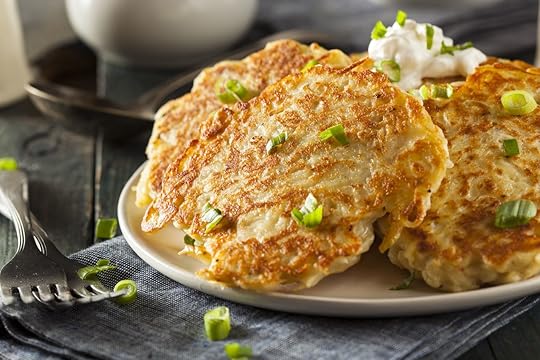
Ireland is more known for its whiskey and beer than its food. When food is brought up, conversation tends to start and stop at corned beef and cabbage. That, or some vague mention of potatoes. Those stereotypes are tired and should have been dispelled years ago. Ireland has a thoroughly modern food scene, and the top chefs in the country are making drool-worthy dishes everywhere you look. That said, to understand Irish food you first have to understand the country’s comfort food.
These are the seven best traditional Irish dishes to eat on St. Patrick’s Day as well as every other day.
Irish stew
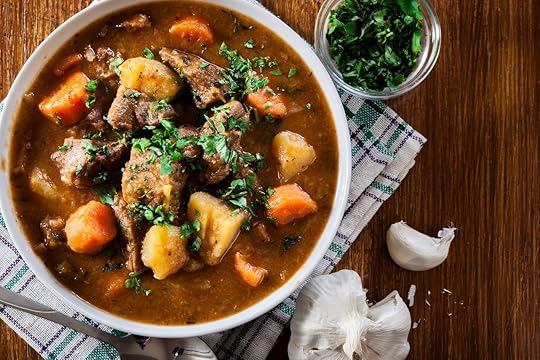
Photo: Slawomir Fajer/Shutterstock
If there’s one thing you need to know about Irish stew, it can be learned in two lines from an uncredited ballad from the 1800s: “Then hurrah for an Irish stew / That will stick to your belly like glue.”
Irish stew is, at its most simple, a thick mutton, potato, and onion soup. It embodies everything about thrifty food: the meat is from old sheep that had spent their lives providing wool or milk, the broth from simmered sheep bones, and the meat all broken up with some cheap and plentiful root vegetables. When available, there’s also some variation of parsley, barley, mushrooms, and carrots. Irish immigrants brought their soul-warming comfort food with them wherever they traveled and adapted the recipe to what was available. An uncountable number of variations exist today, and don’t be surprised if you find an Irish stew made with wine or Guinness.
Colcannon

Photo: Slawomir Fajer/Shutterstock
Colcannon is a working-class meal of mashed potatoes mixed with kale, cabbage, leeks, and cream. It’s eaten year-round, but is most associated with Halloween. The holiday goes back a long way in Irish culture, and colcannon has held a special place on Halloween menus since the mid-1700s. On this day, an item is folded into the bowl of colcannon like a plastic baby in a king cake. A coin means the finder will have wealth in the future, a rag means poverty, and a stick means spousal abuse. Other trinkets include a button, which meant a man would stay single for the year, and a thimble, which meant the same for a women. Women would put colcannon in a sock and hang it from a door so that the first man to come in would be their husband. A daring, if seemingly ineffective, trick.
Black and white pudding
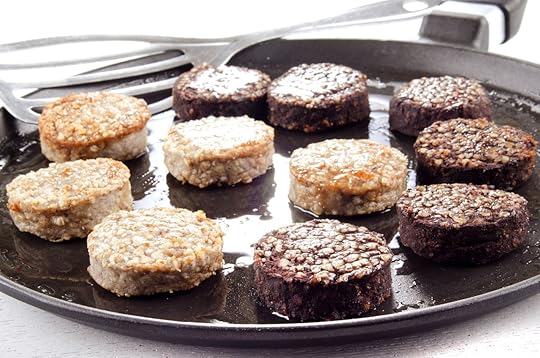
Photo: Joerg Beuge/Shutterstock
Black pudding is more commonly known as blood sausage. Beloved by some and reviled by its very name by others, black pudding is made with pork, grain, fat, and blood. White pudding, which is served alongside black pudding in the name and on the plate, is made with the same ingredients except for the blood. Both are formed into a type of sausage, cut into slices, and pan-fried. It has been made around Ireland for centuries. It’s commonly served with a heaping Irish breakfast fry-up with bacon, eggs, tomato, and beans; the white pudding is what sets it apart from a full English breakfast.
Boxty
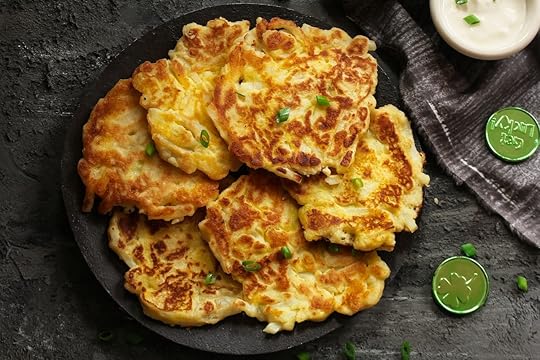
Photo: vm2002/Shutterstock
Simply potato cakes by another name, boxty are traditionally eaten in the north and midlands of Ireland. Typical boxty is made with grated potatoes, baking soda, flour, milk, salt, and occasionally egg, which is all mixed together. The mix is then either fried in a pan like a hash brown, baked, or boiled. Like many of Ireland’s potato dishes, boxty came about as a cheap food for working-class families in the 1700s. And like working-class dishes around the world, the recipe varies depending on whose family recipe you’re using. Today, you can find boxty with any number of variations and toppings — think cheese, fresh vegetables, and meat — that add some flavor and cut through the starch of the potato-on-potato dish.
Barmbrack
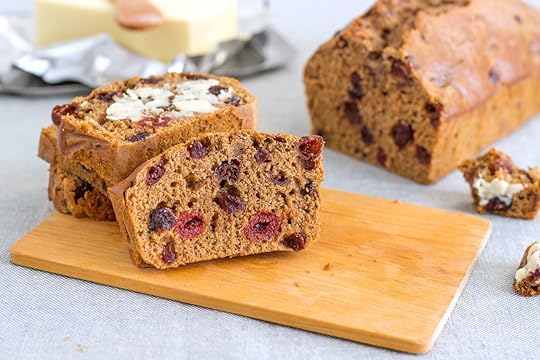
Photo: Siim79/Shutterstock
Barmbrack is a type of fruitcake that’s traditionally served around Halloween because fruitcake is terrifying. Like Ireland’s other Halloween food, colcannon, barmbrack can have an object hidden inside that means something for whoever the finder is. Its Gaelic name is báirín breac, which means speckled loaf. Whether you go with the traditional name or its modern moniker, the loaf is made with raisins and other dried fruit, nuts, flour, sugar, egg, spices, and whiskey (preferably Irish whiskey). Try barmbrack instead of Irish soda bread this year for St. Paddy’s.
Champ
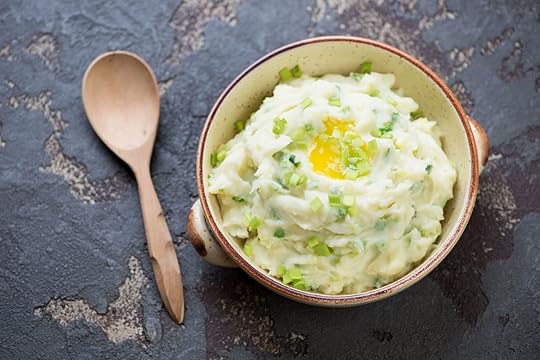
Photo: Nickola_Che/Shutterstock
Champ is like a less luxurious colcannon, and is indistinguishable from mashed potatoes in the US. It’s made with potatoes, milk, butter, onions, salt, and pepper. There’s not much else to say about it, but that doesn’t devalue it in the eyes of all who appreciate some solid Irish comfort food.
Shepherd’s pie

Photo: Anna Shepulova/Shutterstock
A better name for shepherd’s pie would be frugal potato pie. Admittedly, that’s not as appetizing, so here we are. Shepherd’s pie is made with a crust of mashed potatoes on the top and a minced mutton and vegetable filling (if it uses beef then it’s called cottage pie). It’s the ideal method of combining leftovers without having a strange mix of flavors. You can find shepherd’s pie in Ireland and around the world today, and each place has its own twist. 

More like this: 12 myths about Irish food and drink that need to be debunked
The post 7 best traditional Irish dishes that aren’t just corned beef and cabbage appeared first on Matador Network.

Matador Network's Blog
- Matador Network's profile
- 6 followers



